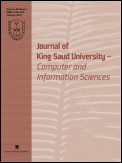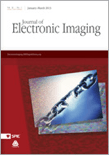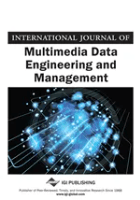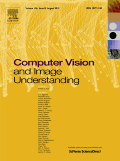
IEEE MULTIMEDIA
metrics 2024
Unveiling the future of multimedia technology.
Introduction
IEEE Multimedia, published by IEEE Computer Society, is a prestigious journal dedicated to advancing the fields of multimedia technology and innovations in computing. With an ISSN of 1070-986X and an E-ISSN of 1941-0166, the journal has established a significant impact within the academic community, holding an impressive ranking in various categories: Q2 in Computer Science Applications, Hardware and Architecture, Signal Processing; Q1 in Media Technology; and Q2 in Software as of 2023. Spanning from 1994 to 2024, IEEE Multimedia strives to publish cutting-edge research and development findings, focusing on the convergence of multimedia with engineering and computing disciplines. Researchers and professionals across these domains are encouraged to engage with its rigorously peer-reviewed content, enhancing their understanding and application of multimedia methodologies in their respective fields.
Metrics 2024
 0.81
0.81 2.30
2.30 3.00
3.00 73
73Metrics History
Rank 2024
Scopus
IF (Web Of Science)
JCI (Web Of Science)
Quartile History
Similar Journals

Journal of King Saud University-Computer and Information Sciences
Empowering Innovation in Computing and Information SciencesJournal of King Saud University-Computer and Information Sciences, published by ELSEVIER, is a prestigious open-access journal focusing on the rapidly evolving fields of computer science and information technology. Since its inception in 1996, this journal has provided a platform for high-quality research and innovative ideas, promoting the dissemination of knowledge to a global audience. With a remarkable impact factor and ranked Q1 in the Computer Science (miscellaneous) category as of 2023, it stands among the top 11% of journals in its field, reflecting its commitment to excellence and relevance. The journal proudly carries the ISSN 1319-1578 and E-ISSN 2213-1248, and it is based in Saudi Arabia while being part of a global academic network. With a Scopus rank of #26 out of 232 in general computer science, the Journal of King Saud University-Computer and Information Sciences is an essential resource for researchers, professionals, and students seeking to stay at the forefront of technological advancement. As it continues to thrive through 2024, it invites contributions that will shape the future of computing and information sciences.

Journal of Electronics & Information Technology
Driving Knowledge Forward in Electrical EngineeringJournal of Electronics & Information Technology, published by the prestigious Chinese Academy of Sciences, Institute of Electronics, stands as a vital resource in the field of Electrical and Electronic Engineering. With an ISSN of 1009-5896, this journal has been dedicated to the dissemination of advanced research and innovative applications since its inception in 2001. It holds a competitive position within its category, ranked Q3 in the 2023 Scopus database, reflecting its contribution to the scientific community. The journal addresses a wide array of topics related to electronics and information technology, making it indispensable for researchers, professionals, and students aiming to stay at the forefront of technological advancements. Although it operates under a traditional model of access, its cumulative output remains pivotal for knowledge sharing and innovation in the rapidly evolving landscape of electronic engineering. With its commitment to excellence, the Journal of Electronics & Information Technology aims to foster a thriving academic environment and promote impactful research within the discipline.

HNO
Advancing Knowledge in Ear, Nose, and Throat DisordersHNO is a prestigious peer-reviewed journal published by SPRINGER that has been at the forefront of the field of Otorhinolaryngology since its inception in 1948. With a robust ISSN of 0017-6192 and E-ISSN 1433-0458, this journal serves as a critical platform for disseminating innovative research, clinical practices, and educational content pertinent to the diagnosis and treatment of ear, nose, and throat disorders. Based in Germany and targeted at a global audience, HNO has established itself in 2023 within the Q3 category of the Scopus ranking, positioning itself at 71 out of 123 journals in the field, thereby marking its influence among researchers and clinicians alike. While the journal does not currently offer Open Access options, it remains committed to providing high-quality, impactful articles that advance the discipline and cultivate learning. With its continuous publication cycle extending from 1953 to 2024, HNO is poised to remain a cornerstone resource for the Otorhinolaryngology community, striving to address both emerging challenges and established practices in the realm of head and neck disorders.

EURASIP Journal on Image and Video Processing
Unveiling Insights in Image and Video ProcessingEURASIP Journal on Image and Video Processing, published by Springer, is a leading open-access journal dedicated to the dissemination of significant advancements in the field of image and video processing. Since its inception in 2007, the journal has been pivotal in bridging the gap between theoretical research and practical applications, serving a diverse audience of researchers, professionals, and students. With an impressive impact factor reflected in its 2023 Scopus rankings—ranking Q2 in Electrical and Electronic Engineering, Information Systems, and Signal Processing—this journal showcases innovative methodologies, applications, and technologies in the realm of image and video processing. Authors benefit from the journal's open-access model, promoting widespread visibility and accessibility of their work. Located in the heart of New York City, the journal continues to evolve, covering converged years from 2007 to 2024, ensuring it remains at the forefront of research in a rapidly changing technological landscape.

Traitement du Signal
Connecting Ideas, Advancing EngineeringTraitement du Signal, published by the INT Information & Engineering Technology Association, is a distinguished journal that serves the vibrant field of Electrical and Electronic Engineering. With an ISSN of 0765-0019 and an E-ISSN of 1958-5608, this journal has made significant contributions to the discipline since its inception. While it currently operates under a non-open access model, it maintains its commitment to disseminating valuable research from 2010 to 2023, despite its recent discontinuation in Scopus coverage. Recognized in the third quartile (Q3) of the category in 2022, the journal provides a platform for researchers, professionals, and students to publish their findings on topics such as signal processing, communications, and related technologies. By curating high-quality articles, Traitement du Signal plays a crucial role in advancing knowledge and fostering innovation within the electrical and electronic engineering community.

Journal of Big Data
Harnessing Big Data for Transformative ResearchJournal of Big Data, published by SPRINGERNATURE, is a leading academic journal dedicated to advancing the understanding and application of big data technologies and methodologies across various domains. Since its inception in 2014, this Open Access journal has gained recognition for its rigorous peer-reviewed research, boasting impressive rankings in multiple categories in Scopus, including Q1 in Computer Networks and Communications and Q1 in Information Systems. With its impactful contributions, the journal is positioned at the forefront of scholarly work on big data, addressing critical topics such as data analytics, storage, visualization, and applied data science. Its global reach and commitment to disseminating knowledge ensure that researchers, professionals, and students have equitable access to groundbreaking findings that empower advancements in technology and information systems. The Journal of Big Data continues to foster collaboration and inspire new research avenues leading to tangible impacts in the field.

Journal of Signal Processing Systems for Signal Image and Video Technology
Pioneering Research in Signal, Image, and Video Technologies.Journal of Signal Processing Systems for Signal Image and Video Technology, published by SPRINGER, is a leading interdisciplinary journal dedicated to advancing research and development in the fields of signal processing, image processing, and video technology. With an ISSN of 1939-8018 and an E-ISSN of 1939-8115, this journal emphasizes both theoretical and practical applications, boasting a wide scope that ranges from control and systems engineering to hardware architecture. Since its inception in 2008, it has gained a solid reputation, reflected in its 2023 category quartile rankings—including Q2 in Control and Systems Engineering and Q3 in Signal Processing—demonstrating its significance within the academic community. The journal is underpinned by a commitment to open access, promoting broad dissemination of knowledge, and is particularly vital for researchers, professionals, and students looking to contribute to and stay updated in these rapidly evolving fields. With ongoing explorations into the convergence of technology and methodology until 2024, the journal stands as a crucial resource for the latest innovations and discussions in signal processing systems.

JOURNAL OF ELECTRONIC IMAGING
Advancing the Future of Electronic Imaging.JOURNAL OF ELECTRONIC IMAGING, published by SPIE - Society of Photo-Optical Instrumentation Engineers, stands at the intersection of cutting-edge research in various fields including Atomic and Molecular Physics, Optics, and Computer Science Applications. With an ISSN of 1017-9909 and an E-ISSN of 1560-229X, this esteemed journal has been a significant contributor to the scientific community since its inception in 1993, continuing its mission to provide a platform for innovative research through 2024. Operating from its headquarters in Bellingham, WA, United States, the journal is currently categorized in the third quartile for major domains such as Electrical and Electronic Engineering, indicating a robust engagement with contemporary topics and advancements. Although it is not an Open Access journal, it remains accessible to a wide audience of researchers, professionals, and students through institutional subscriptions. With its impactful contributions and a comprehensive view of electronic imaging, this journal not only serves as a vital resource but also drives discussions that shape the future of this rapidly evolving field.

International Journal of Multimedia Data Engineering & Management
Connecting Ideas in Multimedia Data EngineeringInternational Journal of Multimedia Data Engineering & Management, published by IGI Global, is a pivotal platform for the dissemination of knowledge in the fields of multimedia data engineering, information management, and technology-driven methodologies. With a keen emphasis on exploring innovative approaches to data management, this journal engages researchers, professionals, and students interested in the rapidly evolving digital landscape. Although currently not designated as Open Access, the journal is accessible through institutional subscriptions, fostering rigorous academic dialogue and collaboration. The ISSN for this esteemed publication is 1947-8534 (E-ISSN: 1947-8542), ensuring its global reach and recognition within the scholarly community. By bridging theoretical perspectives with practical applications, the International Journal of Multimedia Data Engineering & Management supports ongoing advancements and drives impactful research in multimedia technologies.

COMPUTER VISION AND IMAGE UNDERSTANDING
Pioneering Insights in Pattern RecognitionCOMPUTER VISION AND IMAGE UNDERSTANDING is a leading academic journal published by Academic Press Inc, Elsevier Science, dedicated to the advancement of the fields of computer vision, image understanding, and pattern recognition. Since its inception in 1993, this esteemed publication has garnered a reputation for excellence, achieving a remarkable Q1 ranking in the categories of Computer Vision and Pattern Recognition, Signal Processing, and Software as of 2023. With its robust impact factor and high visibility in the scientific community—ranking #22 out of 106 in Computer Vision and Pattern Recognition and #27 out of 131 in Signal Processing—this journal serves as a vital resource for researchers, professionals, and students looking to explore and contribute to state-of-the-art developments. Although it does not operate under an Open Access model, its rigorous peer-reviewed content ensures quality and relevance in a rapidly evolving technological landscape. The journal’s commitment to fostering innovation makes it an essential tool for anyone engaged in the study and application of computer vision technologies.